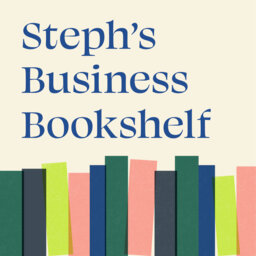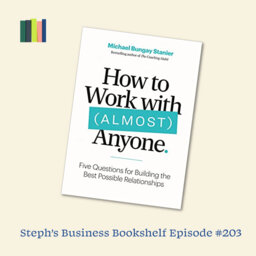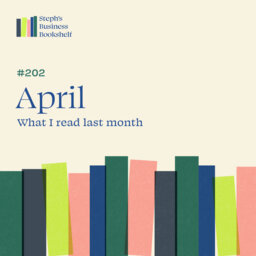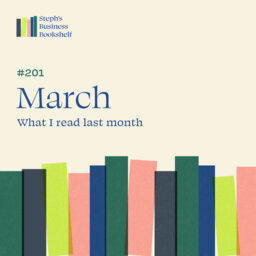A World Without Email by Cal Newport - why you need to rethink your relationship with your inbox
About the author
Cal is a computer science professor at Georgetown University. In addition to my academic research, he writes about the intersection of digital technology and culture. Cal is particularly interested in our struggle to deploy these tools in ways that support instead of subvert the things we care about in both our personal and professional lives.
He’s a New York Times bestselling author of seven books, including, most recently, A World Without Email, Digital Minimalism, and Deep Work. He’s also the creator of The Time-Block Planner.
Cal’s books have been published in over 35 languages and has been featured in many major publications, including the New York Times, Wall Street Journal, New Yorker, Washington Post, and Economist and has a long-running blog Study Hacks.
Source: https://www.calnewport.com/about/
About the book
Modern knowledge workers communicate constantly. Their days are defined by a relentless barrage of incoming messages and back-and-forth digital conversations–a state of constant, anxious chatter in which nobody can disconnect, and so nobody has the cognitive bandwidth to perform substantive work. The “hyperactive hive mind” workflow has become a productivity disaster, reducing profitability and perhaps even slowing overall economic growth. Equally worrisome, it makes us miserable. Humans are simply not wired for constant digital communication.
The knowledge sector’s evolution beyond the hyperactive hive mind is inevitable. The question is not whether a world without email is coming (it is), but whether you’ll be ahead of this trend. If you’re a CEO seeking a competitive edge, an entrepreneur convinced your productivity could be higher, or an employee exhausted by your inbox, A World Without Email will convince you that the time has come for bold changes, and will walk you through exactly how to make them happen.
Source: https://www.calnewport.com/about/
Big idea #1 — The hyperactive hive mind
This is a term that Cal uses throughout the book as the description of the way that most organisations work and are plugged into constantly.
It’s the ongoing conversation, the structured and unstructured messages by email, Slack, Teams, or the many other available channels. They just don’t stop. There’s just a tirade all day of these messages interrupting your ability to work.
Various studies have shown that the average worker is checking their email every six minutes(!) on average. Which increases exhaustion and absolutely decreases efficiency.
There’s some interesting stats in the book around the psychological impact of all these unread messages. It dates back to our prehistoric brain and it triggers a threat of neglected social obligation; that we’ve got others depending on us and we have failed to do what they need us to do. Possibly therefore putting our place of belonging in danger.
In the book, Cal talks about the fact that we are spending more time communicating about tasks than actually doing them. There’s a whole chapter dedicated to how miserable this makes us.
And we often work this way in this hyperactive hive mind, this constant battle of email after email, because counter-intuitively, it’s easier. Especially if everyone else is working the same way. But is it really easier given the cost to our productivity, our quality of work, our happiness, and ultimately our health.
It’s it’s not great, is it?
Big idea #2 — Attention capital
Cal argues that we are where industrial manufacturing was in 1900, just on the cusp of the major shifts happening, that changed everything. The point just before production lines and some of the revolutionary processes that were put into place by companies such as Ford, that changed the face of manufacturing.
Most organizations remain stuck in the productivity quicksand of the hyperactive hive, mind, workflow, content to focus on tweaks meant to compensate for its worst excesses.
At the moment, we’re just making tiny little tweaks, maybe introducing a new tool, but we haven’t actually changed the fundamental way that work is done. We are often just replacing one problem with another (ie using Slack instead of email).
Attention capital is creating workflows that optimise the human brain ability to add value to information. Not just to chase our own tails and send and receive more emails.
He says that we need to get serious about how we work and really make the most of that attention capital. We need to understand that we work best sequentially, not simultaneously. Therefore, we need to minimise the constant switching between tasks and projects that inevitably happens when we’re working from our inboxes.
In the book, Cal regularly references Peter Drucker’s work which talks about how knowledge workers need autonomy. Cal adds to this and says that they also need their workflows managed. He splits the work into two elements;
1) work execution, which requires more autonomy and is where knowledge workers use their brains and skills
2) work flow, which is where you need less autonomy, because is is the structure and coordination of the work
He talks about the fact that most organisations have reduced the head count of their support staff and place the responsibilities and tasks back on their knowledge workers. Cal talks about how this has decreased specialisation. You’ve got these specialists knowledge workers, in all different fields and industries, having to also know how to best organise their travel or deal with booking a workshop day, all of which detracts from their ability to do their best work (that they’re likely employed to do). There’s case studies in the book of places who have reversed this and actually increased their support staff head count. They quickly saw productivity and output increase, in a way that offset the cost of employing these extra staff members.
A quick message...
Would you consider supporting the podcast with your next book purchase? Save the Steph’s Business Bookshelf affiliate stores for Book Depository (Global) or Bookshop.org (US) in your browser.
Big idea #3-Focus on the process
This comes back to the idea of the workflow, rather than the work execution. We need better systems and processes to work to.
There were several examples of companies moving to a more Kanban or card based system (eg Trello or Asana). Set up like notice boards, these systems allow you to focus on one project at a time. The columns might represent projects or different stages of a project. All the information related to that particular task or project is stored in the cards in the board and means that people can just work from there. They can then easily avoid working out of their inbox all the time, being distracted by other projects or messages.
There was a couple of examples in the book of people who have moved to that particular format of working in their organisation. They almost never use email, certainly not internally. They still do use it with suppliers and clients, but all of the information for projects is stored in the boards. So internally they can just go to the board, see progress and ask questions, and they’re not constantly emailing to ask for updates etc because it’s all available for team members to see.
It’s so important to get them the system right, and the communication right. Again, there’s examples in the book of teams using standup meetings. Rather than endless email updates, companies started to do a simple stand up meeting every couple of days for 10 to 15 minutes with the project team. Key questions are asked answered; what’s happening, what you working on today, what problems do you need help with? This saves hours of emails back and forth getting those updates.
You probably have more control to make some of these changes than you think. And it doesn’t always have to be public. For example, you don’t have to put an auto responder on to say ‘I’m only gonna be checking my emails between 12:00 PM and 1:00 PM and then 5:00 PM and 6:00 PM’.
Side note: Cal said that this became popular after the Tim Ferriss’s Four Hour Work Week came out and everyone started doing this, but it put people’s backs up and they tried to find ways around that system, such as calling you, even though the thing might not actually be urgent because they’re just trying to find ways or loopholes around the visible barrier you’ve put up.
If you just did that quietly, started checking your email twice a day, stayed out of your inbox the rest of the time, and had some really good blocks of deep work set up to do your work, people wouldn’t probably even notice. There might be a couple of people who are used to you responding immediately, who it might take them a little bit of getting used to, but it probably won’t be as painful or as difficult as you think it might be.
And there was a point in the book, which I quite enjoyed, that if you’re good at what you do, you’re allowed those kinds of idiosyncrasies. And people probably won’t even bat an eyelid, if they even notice at all.
We certainly shouldn’t be afraid of the inconvenience of change because the benefits of it is so much greater than the way we are working at the moment. You know it’s not working. I know it’s not working. We all know it’s not working, but why are we so resistant to even trying something a little bit different?
 Steph's Business Bookshelf
Steph's Business Bookshelf


